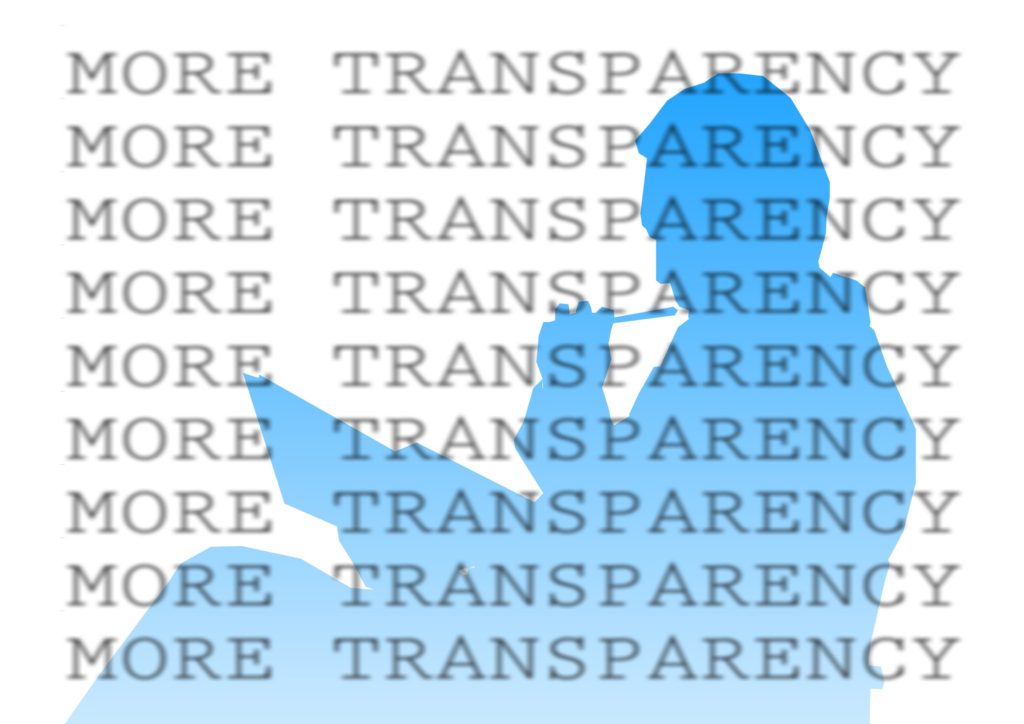How Transparency Can Lead to Greater Business Efficiency
Are We Clear? How Transparency Increases Efficiency
Are We Clear?
How transparency can lead to greater business efficiency
Transparency is one of the biggest buzzwords around, especially when it comes to business or politics. But what do we even mean when we talk about transparency? How does a company or person actively strive for transparency?
At its core, transparency consists of quality communication, and quality communication means three things: clarity, frequency, and consistency.
Transparency and clarity sound like redundant jargon, but clarity is just one aspect that leads to true organizational transparency. The three most important aspects of transparency are linked to clarity of purpose, execution, and responsibility.
You have a new project or feature to launch. For employees to have a buy-in it’s important to be clear on why you have made that decision so teams can get behind it intellectually. If everyone is clear on the purpose, it makes the execution more productive because everyone is beginning with the goal in mind. If you know why you are doing something, it helps to answer a lot of questions about how to do it.
Having a clear plan is also essential: the steps and milestones that need to be reached and when is helpful in keeping the waters from getting muddy and people lost in a mire of confusion instead of working purposefully toward a shared goal.
The last and most important part of clarity is clarity of responsibility. If you don’t know what precisely you are supposed to be doing, when it is due, who can help you accomplish it, then you will bottleneck the project, or worse not complete it on time. It is important if you are the manager of a project to assign clear responsibility to one individual (no matter how much that person delegates down) who is ultimately responsible for seeing the task through to completion.
Now that you have a clear purpose, plan, and have assigned roles, you need to take this and communicate the plan and goals frequently.
Frequency is another important factor of communicating your way to transparency. When writing or giving a speech a frequent adage is: “Tell them what you are going to tell them, tell them, then tell them what you told them.” This repetition may seem overbearing, but it takes a while for messages to sink in. Not only that, but these days we are inundated with so much information, that it often takes repetition of a message before we can fully grasp it—and more importantly take it seriously.
The more you hear a message, the more it is at the forefront of your mind, and the more likely you and employees will act on it. Everyone will think, “Well they keep on saying we need to do X so I better make sure that gets done.” You don’t have to be a broken record to communicate your message to priority. As a manager, it’s important to repeat the message so that everyone understands, but there’s no need to do it so that it comes off as nagging or micromanaging. The frequency of the message can be spaced out over several days, several weeks, or several times in one meeting, it simply depends on what seems appropriate and what drives the message home.
Consistency is the last component of transparency and it is key. The shorter and more succinct a message is, the less likely it is to get convoluted or misinterpreted as it travels down the communication chain. If a message is truly transparent, then that means that everyone is on the same page and the same goal and action steps are being espoused rather than every person’s individual interpretation of what they heard. When delivering a message, another writer’s trick that comes in handy is covering the “W’s” the Who, What, When, Where, Why (and also How). You need to get this message down, make it as short and clear as possible and then repeat it periodically until it becomes a habit that has a buy-in from all the stakeholders and executors of your message.
To put it all together, to be more efficient you need to have transparent goals. A goal is communicated in a message. Make the message have a clear purpose, plan, and responsibilities. Then shorten that to a consistent message that is repeated frequently until all parties understand clearly, not only their part in the mission, but also the greater purpose. When all stakeholders can see the direction the company is headed and how their efforts contribute, then true transparency has been achieved.


